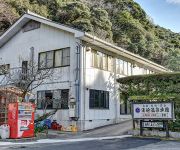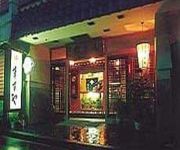Facts and Data
Webpages:
Official Unesco Page
SHIMANE Prefecture
Basis Data:
Unesco World heritage since: 2007
Size of heritage: 529 ha
- Buffer zone: 3,134 ha
Coordinates:
Longitude: 132,435°
Latitude: 35,113°
Summary
The Iwami Ginzan Silver Mine in the south-west of Honshu Island is a cluster of mountains, rising to 600 m and interspersed by deep river valleys featuring the archaeological remains of large-scale mines, smelting and refining sites and mining settlements worked between the 16th and 20th centuries. The site also features routes used to transport silver ore to the coast, and port towns from where it was shipped to Korea and China. The mines contributed substantially to the overall economic development of Japan and south-east Asia in the 16th and 17th centuries, prompting the mass production of silver and gold in Japan. The mining area is now heavily wooded. Included in the site are fortresses, shrines, parts of Kaidô transport routes to the coast, and three port towns, Tomogaura, Okidomari and Yunotsu, from where the ore was shipped.
Location on Map
Show bigger map on Openstreetmap
Introduction
The Iwami Ginzan Silver Mine and its Cultural Landscape, located in the Shimane Prefecture's Ohda City District in Japan, is a UNESCO World Heritage site. This historic site holds immense cultural and historical significance, as it was once the largest silver mine in the world during the 16th and 17th centuries. Today, it stands as a testament to Japan's rich mining heritage and offers visitors a glimpse into the country's past.History
The history of the Iwami Ginzan Silver Mine dates back to the 16th century when silver was discovered in the area. The mine quickly became a major source of wealth for the ruling Matsue clan, who controlled the region. The silver extracted from the mine played a crucial role in financing the military campaigns of feudal lords and contributed to the economic growth of Japan during the Edo period. During its peak, the Iwami Ginzan Silver Mine produced approximately one-third of the world's silver output. The mine's success attracted skilled miners from all over Japan, leading to the development of a unique mining culture and community in the surrounding area. The mine's prosperity also fostered the growth of nearby towns and villages, which became centers of trade and commerce.Current State
Today, the Iwami Ginzan Silver Mine and its Cultural Landscape offer visitors a chance to explore the remnants of this once-thriving mining complex. The site covers an area of approximately 430 hectares and includes various structures and features that showcase the mining operations and the daily lives of the miners. One of the most prominent features of the site is the Omori district, which served as the administrative center of the mine. Here, visitors can see the remains of the magistrate's office, warehouses, and other administrative buildings. The district also includes the Ryugenji Mabu, a massive earthen wall that protected the mine from flooding. Another significant area within the site is the Yunotsu district, a historic port town that played a crucial role in transporting silver and other goods. The district's well-preserved streets and traditional buildings offer a glimpse into the bustling maritime trade that once took place. Visitors can also explore the mining tunnels themselves, which extend for over 600 kilometers beneath the surface. While not all tunnels are accessible, guided tours provide an opportunity to venture into some sections and learn about the mining techniques employed during that era. The Iwami Ginzan Silver Mine and its Cultural Landscape have been carefully preserved and restored to ensure their historical accuracy. The site's inclusion on the UNESCO World Heritage list has helped raise awareness about its significance and attract visitors from around the world. In addition to its historical value, the site also offers stunning natural landscapes, including lush forests and scenic mountain views. Visitors can enjoy hiking trails that wind through the area, providing a unique blend of history and nature. In conclusion, the Iwami Ginzan Silver Mine and its Cultural Landscape in Japan's Shimane Prefecture are a remarkable UNESCO World Heritage site. With its rich history, well-preserved structures, and beautiful surroundings, it offers visitors a captivating journey into Japan's mining heritage and serves as a testament to the region's past prosperity.Hotels and places to stay
Yuzuriha
(RYOKAN) Yuba Onsen Ryokan
(RYOKAN) Tsu Onsen Ryokan Masuya
Sky Hotel Ohda
Videos from the area
Videos provided by Youtube are under the copyright of their owners.











